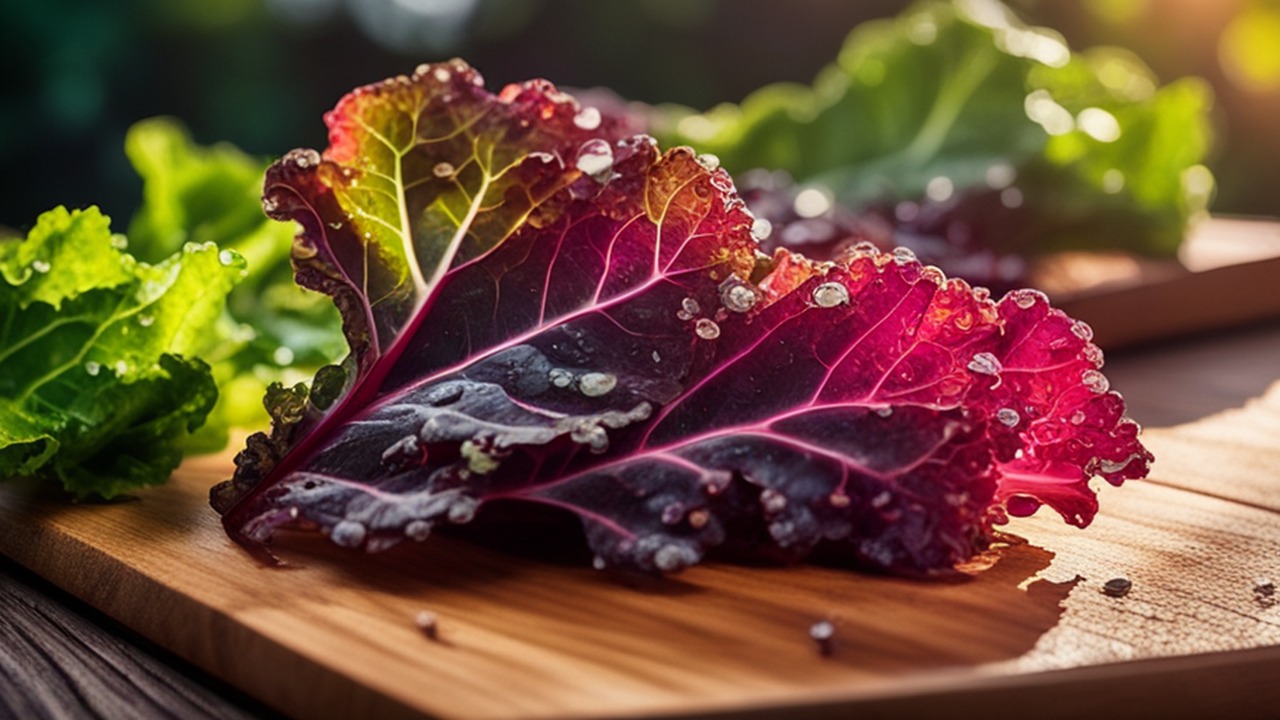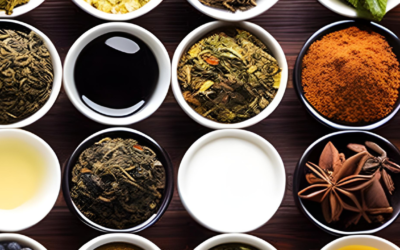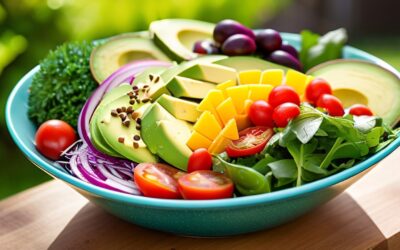Discover the Most Wanted Nutritional Powerhouse of Kale

Discover the Most Wanted Nutritional Powerhouse of Kale
Introduction
As a nutrition devotee, I’m consistently keeping watch for nutrient packed food varieties that can improve our general health. One such superfood that has taken the wellness world by storm is kale.
Kale, this leafy green, is a legit nutrition bombshell bursting with vitamins, minerals and antioxidants.
How about we jump profound into the astonishing universe of kale, investigating its stunning wholesome advantages and sorting out some way to add it to your diets, develop it in your lawn for that garden-fresh benefit, and store it right to watch out for that multitude of good nutrients intact?
Nutritional Benefits of Kale
Kale is not your average leafy green. Kale packs a powerful nutritional punch unlike most other greens.
Kale is your secret weapon, jam-packed with vitamins A, C, and K – key players in the game of maintaining radiant skin, supercharging our immunity and fortifying bone health.
Kale, you know, is also loaded with essential minerals like calcium for strong bones, potassium for a healthy heart rate and muscle function, and magnesium that’s crucial for energy production.
One of the champion elements of kale is its high antioxidant element. Like an unmistakable advantage, the antioxidants in kale fight against disastrous free radicals, assisting us with avoiding persistent medical problems like coronary illness and particular sorts of cancer growth.
Moreover, kale comes packed with powerful stuff like sulforaphane – it’s not only a warrior against chronic inflammation but may also throw some punches at cancer.
Understanding the Vitamins and Minerals in Kale
To truly appreciate kale’s nutritional prowess, it is important to understand the specific vitamins and minerals it contains.
Kale’s vitamin A supports good eyesight, a healthy immune system, and proper growth. But vitamin C isn’t just sitting on the sidelines, it’s a major player as an antioxidant, fueling the production of collagen, acting like a shield against skin damage and helping us get more from our iron intake.
Kale’s a total winner when it comes to packing in vitamin K – not just great for blood clotting, but it also keeps your bones strong and healthy.
This nutrient is urgent for the individuals who may be inclined to bone debilitating circumstances like osteoporosis.
When it comes to minerals, kale is practically a treasure chest. Calcium, often associated with dairy products, can also be obtained from kale.
Beyond powering strong bones and teeth, calcium is the unsung hero in muscle performance and nerve signal relay.
Kale’s Role in Promoting Overall Health and Well-being
Eating more kale can help people stay healthy because it has antioxidants that reduce oxidative stress and lower the risk of chronic diseases.
Moreover, the abundance of fiber in kale not only nurtures your digestive health but also plays a part in managing weight by giving you an early sense of fullness.
If you’re wrestling with the likes of arthritis or asthma, kale’s got your back – it’s loaded with anti-inflammatory benefits that can help soothe these conditions.
Kale’s nutrient-rich profile, loaded with vitamins and minerals, gives your brain a real boost – sharpening cognitive skills and keeping the nervous system in tip-top shape.
Did you realize that kale, being nutrient-dense and low on calories, is like a secret weapon for those of us trying to maintain or even drop our weight?
Different Ways to Incorporate Kale into Your Diet
Alright, we know kale is a big hitter in the nutrition game, but let’s dive into how to weave this powerful leafy green seamlessly into our day-to-day meals, shall we?
One popular way to enjoy kale is by adding it to smoothies. Blending kale with fruits and other vegetables not only masks its slightly bitter taste but also allows for easy consumption of its abundant nutrients.
Feel free to play around with a variety of blends until you discover the kale smoothie mix that suits your taste buds best.
One more delightful method for integrating kale is by involving it as a base for plates of mixed greens. Simply chop the kale into bite-sized pieces, massage it gently to soften its texture, and mix it with your favorite salad ingredients.
With its hearty texture, kale steps up to the plate as a star player in satisfying salads that can either take center stage or act as an enticing sidekick. Don’t forget to drizzle some homemade dressing over your kale salad for an extra burst of flavor.
If you’re a fan of warm dishes, consider sautéing kale with garlic and olive oil. Sautéing the greens in olive oil and garlic lets you keep more nutrients while making it taste better.
But have you considered swapping out spinach for kale in dishes like lasagna, quiches, or even your favorite stir-fry? You have a universe of choices with regards to meshing kale into your cooking game.
Easy and Delicious Kale Recipes
To get you started on your kale journey, here are a couple of easy and delicious recipes that will make you fall in love with this nutritional powerhouse:
1. Kale and Quinoa Salad with Lemon Vinaigrette
You’ll need two cups of chopped kale for this.
You’ve got a full cup of quinoa, all cooked up and ready to go.
Slice a handful of cherry tomatoes in half.
You’ll need a quarter cup of diced cucumber for this.
You’ll need a quarter-cup of feta cheese, broken into small bits.
You’ll need a couple spoonfuls of lemon juice.
You’ll need a spoonful of olive oil.
Add a hint of salt and a sprinkle of pepper, according to your inclination.
Instructions:
Mix together the kale, quinoa you’ve cooked earlier, cherry tomatoes, cucumber slices and a dash of feta cheese in a spacious bowl.
Get a little bowl and combine as one your lemon juice, olive oil, alongside some salt and pepper.
Splash the salad with that tangy lemon vinaigrette and give it a good stir to make sure every bit gets its share of zest.
Serve chilled and enjoy!
2. Sautéed Garlic Kale
Ingredients:
You’ll need four cups of kale, make sure it’s chopped up nicely.
Chop up a pair of garlic cloves until they’re finely minced.
You’ll need a pair of olive oil tablespoons.
Salt and pepper to taste.
Instructions:
Warm up your olive oil in a big frying pan, keep the heat to medium.
Toss in the chopped garlic, letting it cook for a minute or two until its aroma fills the air.
Throw the cut up kale into your saucepan.
Give it a speedy mix and let it sizzle for around three to four minutes until you see it begin to shrivel.
Season with salt and pepper to taste.
It can coordinate well with pastas, rice, or remain solitary.
Tips for Growing Your Own Kale at Home
If you’re inspired to take your love for kale to the next level, why not grow your own at home? Cool weather is like a best friend to kale, which doesn’t need much pampering to flourish.
Start by selecting a sunny spot in your garden or balcony that receives at least 6 hours of sunlight each day. Boost your soil’s health by mixing in some organic matter and make sure it can drain well to avoid waterlogged roots.
Sow the kale seeds directly into the soil, spacing them about 12 inches apart. Keep the soil consistently moist but not waterlogged and avoid overwatering.
As the kale plants grow, regularly fertilize them with a balanced organic fertilizer. Harvest the outer leaves of the kale when they reach a desirable size, allowing the inner leaves to continue growing. With a little care and patience, you’ll soon have a bountiful kale harvest right at your fingertips.
How to Store and Preserve Kale for Maximum Nutrition
To make the most of your kale’s nutritional value, it’s crucial to store and preserve it correctly. After harvesting, gently wash the kale leaves and remove any dirt or debris.
Pat them dry with a clean kitchen towel or use a salad spinner to remove excess moisture. Store the kale in a perforated plastic bag or an airtight container lined with a paper towel to absorb any excess moisture.
Place the bag or container in the refrigerator’s crisper drawer, where the temperature is slightly cooler and humidity levels are higher.
Properly stored kale can stay fresh for up to a week. Got a surplus of kale? You might want to think about blanching it and popping it in the freezer for later.
Blanching? Yeah, it’s a pro move—it locks in the kale’s vital nutrients and keeps that lush green color intact.
Just quickly dunk the kale leaves in a boiling water for a moment or two, then give them an icy shock to halt their cooking journey.
Once cooled, squeeze out the excess water, pack the kale into freezer bags, and freeze for up to six months.
Debunking Common Myths About Kale
Despite its undeniable nutritional benefits, kale has faced its fair share of myths and misconceptions. Let’s debunk some of the common myths surrounding this leafy green:
Myth 1: Kale tastes bitter and unpleasant.
While kale does have a slightly bitter taste, it can be easily mitigated by pairing it with other flavorful ingredients or using certain cooking methods like massaging or sautéing. To find the kale cooking you like best, evaluate various recipes and cooking methods.
Myth 2: Kale is only suitable for salads.
Sure, salads and kale go hand in hand. But think bigger! There’s a world of dishes out there just waiting for that leafy green touch.
Whether it’s blending it into a refreshing smoothie, stirring up a vibrant soup, sizzling in stir-fries or baking crisp chips, the possibilities are endless when you bring kale to your culinary game.
Myth 3: Kale is overrated and overhyped.
Sure, kale’s hype train has been chugging along recently, but you can’t argue with its nutrient-packed punch. Kale packs a nutritional punch.
Conclusion: Embracing Kale as a Key Component of a Healthy Diet
How about we start incorporating kale into our daily diet for a health boost, sounds good?
Kale’s nutritional benefits make it a great choice. Packed with a whole lot of vitamins, minerals, and antioxidants, kale is your go-to for boosting health and feeling great.
Packed with immune-supporting attributes and potentially waging war on inflammation and cancer, kale really steps up to the plate.
Incorporating kale into your diet is easier than you think. Whether you enjoy it in smoothies, salads, stir-fries, or even chips, there is a kale recipe out there for everyone.
You can even take it a step further and grow your own kale at home, ensuring a fresh supply right at your fingertips.
So, why not give kale a chance? Offer kale a chance in your meals, and you’ll be stunned by the brain-body advantages it brings. Your taste buds and your well-being will thank you.
Call To Action: Start your journey towards a healthier you by adding kale to your next grocery list. Try one of the delicious recipes mentioned above or get creative and come up with your own.
So, don’t box yourself in—there’s a world of ways to make kale part of your meals.
RELATED POSTS
Exploring Unique and Intriguing Varieties of Black Tea
Explore the rich world of black tea—from Assam to Darjeeling, brewing tips, health benefits, and cultural traditions, one cup at a time.
Discover the Best Natural Remedies for Anxiety and How to Lower Stress
Discover natural remedies and simple ways to reduce anxiety and stress for a calmer, healthier mind and improved well-being.
30 Easy Healthy Meal Ideas for Breakfast, Lunch & Dinner
Discover 30 healthy meal ideas for breakfast, lunch, and dinner. Get easy, balanced recipes to boost energy, support weight loss, and improve overall health.
FOLLOW DISCOVERY BLOGGER









0 Comments